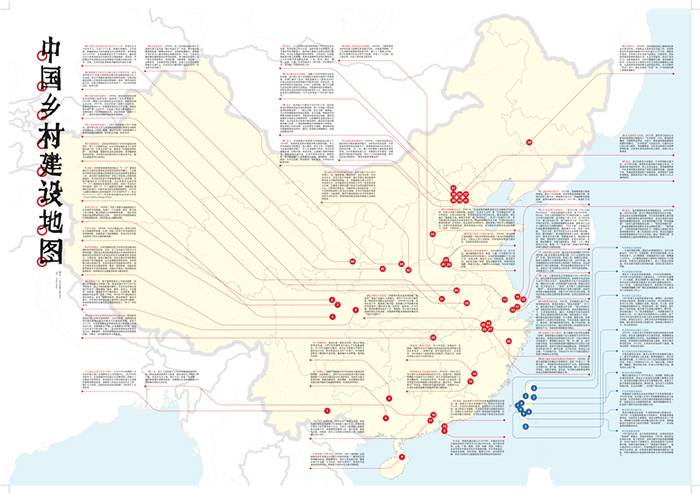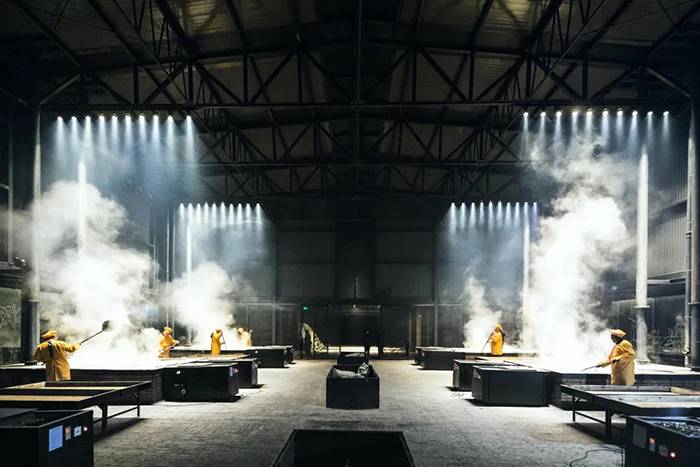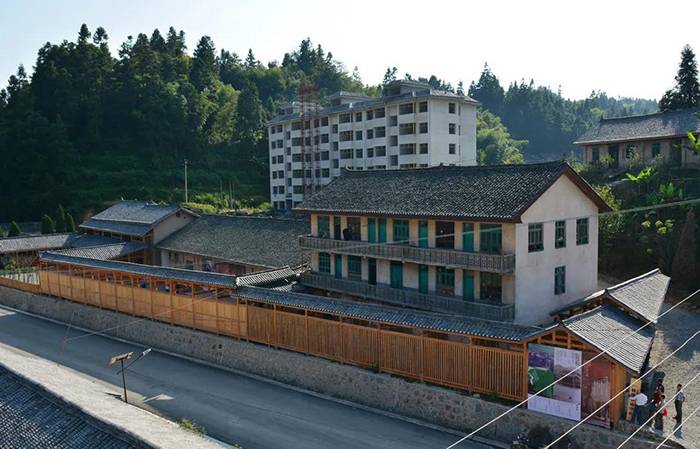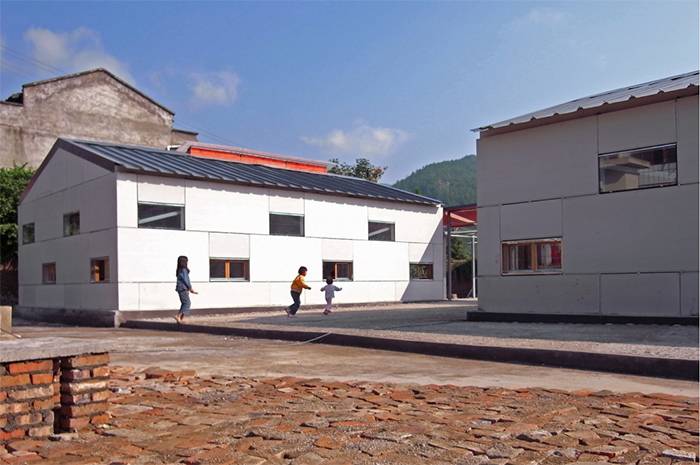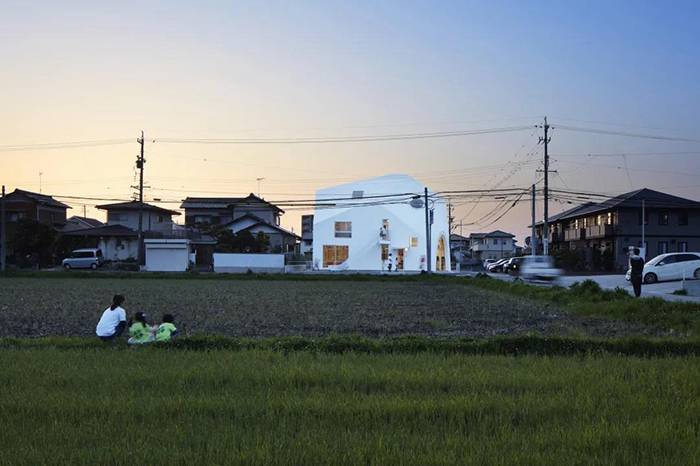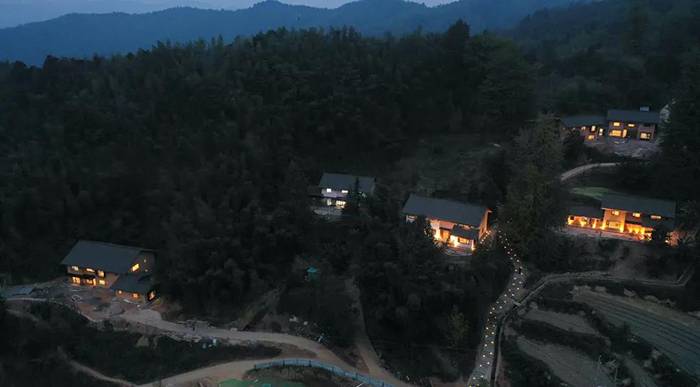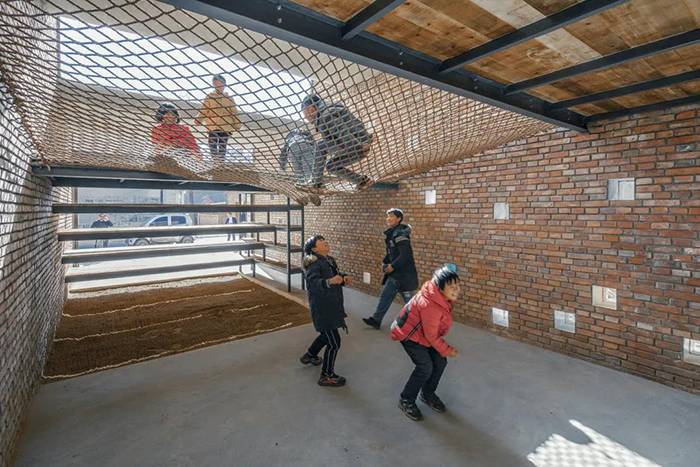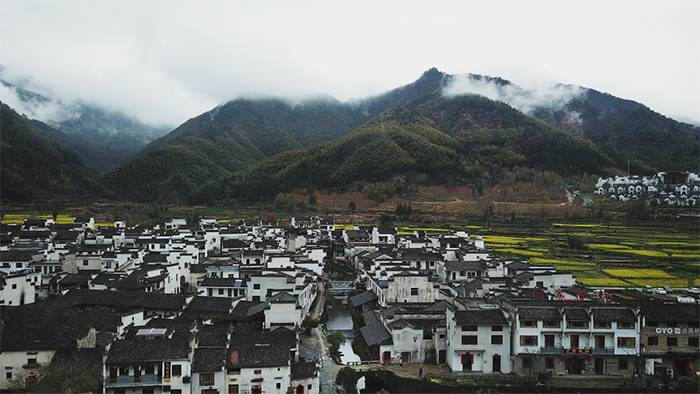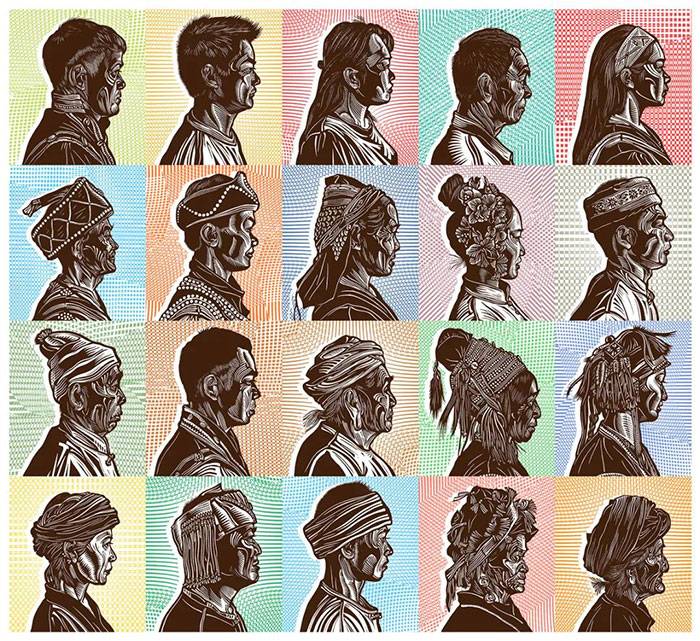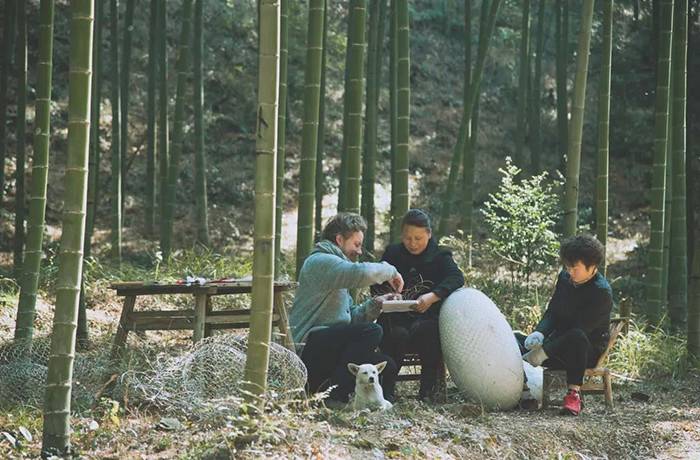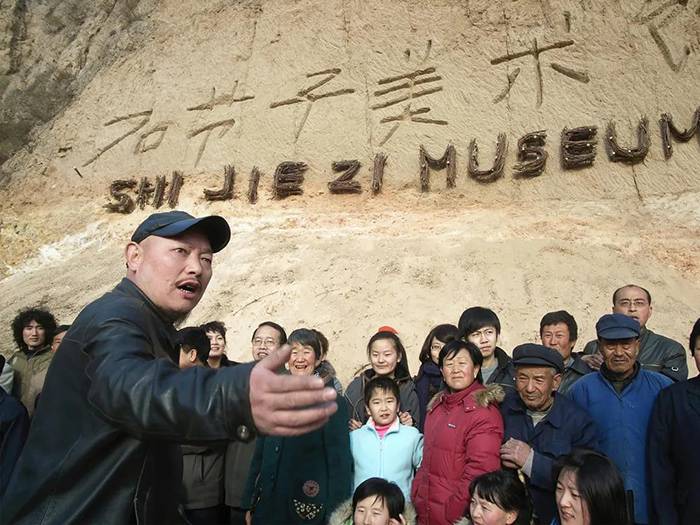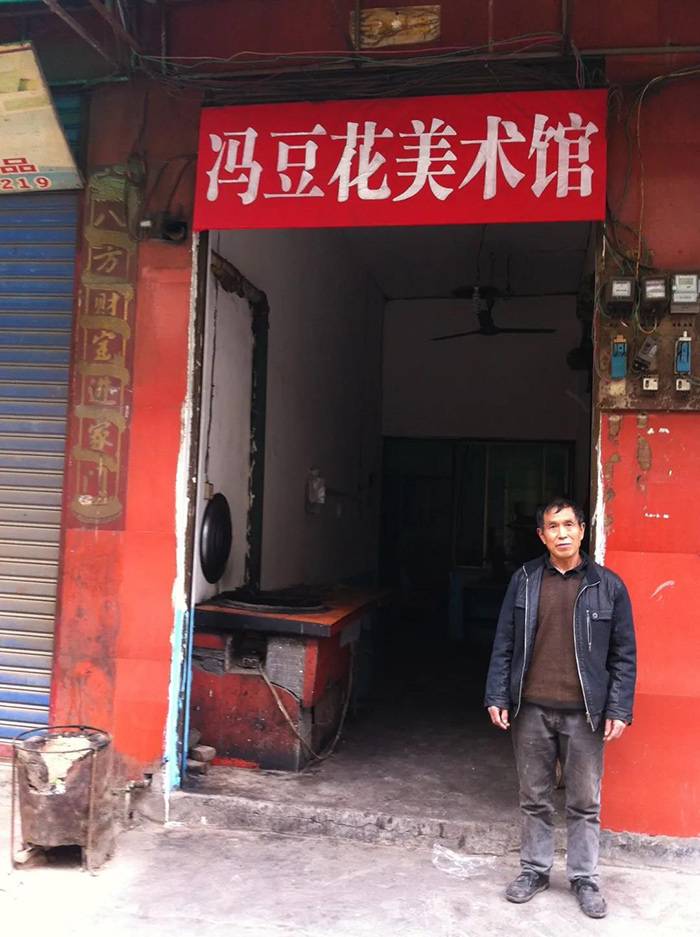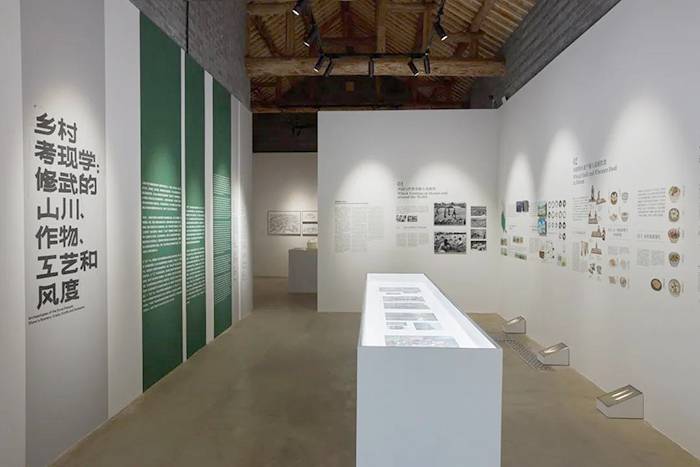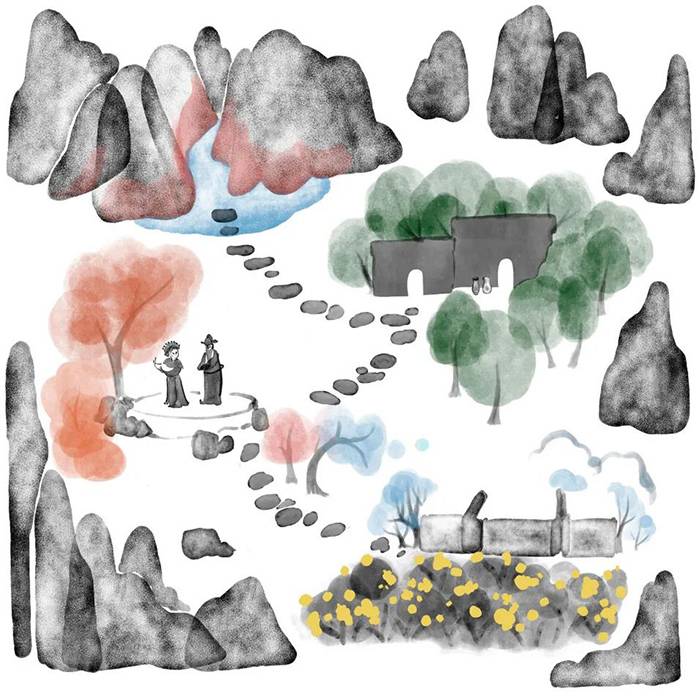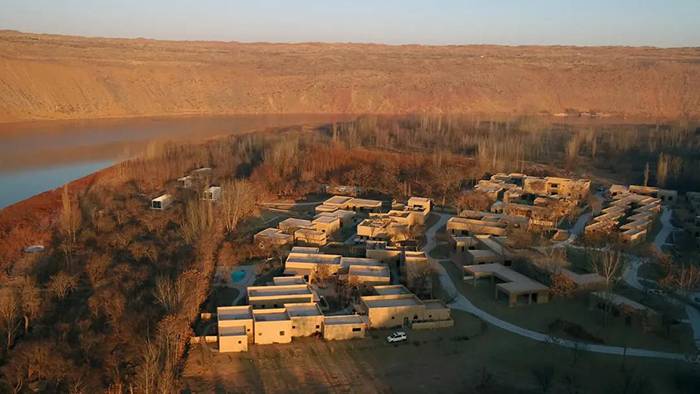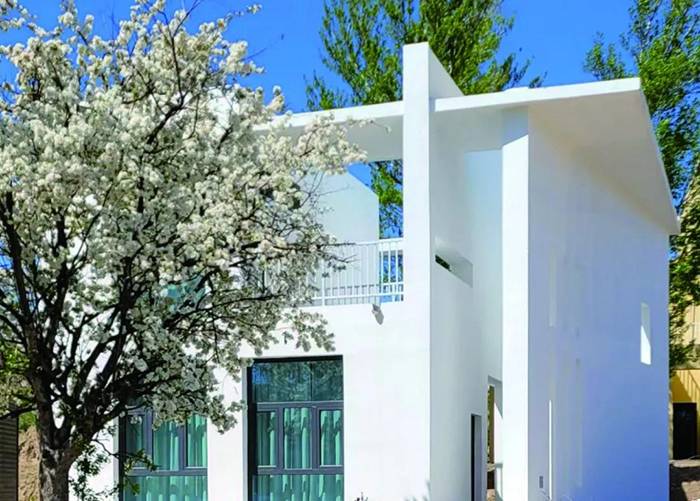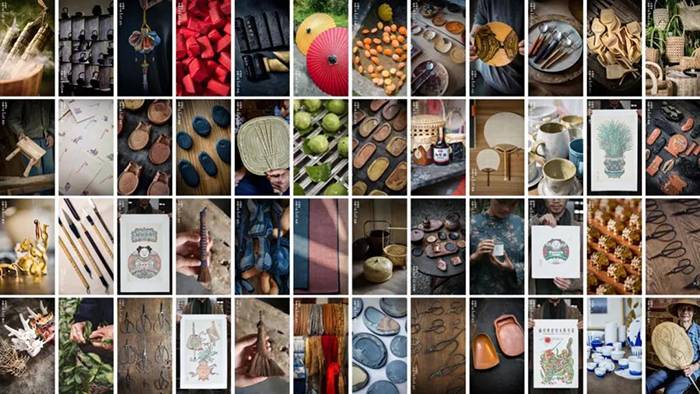乡村建设:建筑、文艺与地方营造实验

展览海报
乡村建设
建筑、文艺与地方营造实验 Rural Reconstruction in China The Practice of Art, Space and Place 2021年5月22日至8月22日 May 22, 2021 - August 22, 2021 江西画院美术馆(景德镇) 江西省景德镇市珠山区胜利路63号 Jiangxi Academy of Fine Art Museum No.63 Shengli Road, Zhushan District, Jingdezhen, Jiangxi Province 参展人 陈奇 何崴 焦兴涛 靳勒 雎安奇 梁井宇 刘家琨 刘庆元 罗宇杰 马岩松/MAD 孟凡浩 青山村实验 渠岩 王求安 夏雨清 徐甜甜 央美CAFA+RK/SP/DY乡建教学 易居乐农 朱竞翔 自然造物 左靖 课本创作小组 Participants CAFA+RK/SP/DY, Chen Qi, EJU-lenong, He Wei, Jiao Xingtao, Jin Le, Ju Anqi, Liang Jingyu, Liu Jiakun, Liu Qingyuan, Luo Yujie, Ma Yansong/MAD, Made in Nature, Meng Fanhao, Qingshan Village Experiment, Qu Yan, Wang Qiu'an, Xia Yuqing, Xu Tiantian, Zhu Jingxiang, Zuo Jing 中国乡村建设地图首刊于《碧山03:去国还乡续》,2013年 © 左靖工作室 前言 Curatorial Statement 引子 过去的四十年,中国呈现了人类历史上最大规模的城市化进程和乡村遽变。在这一社会变迁的过程中,先后经历了以城市为中心发展转向城乡统筹发展两大阶段。不同的历史阶段需要回应不同的命题,如果说以城市为核心的历史阶段是在回应“如何快速发展”的要求,那么对乡村社会发展的日益关注则是在回应“如何可持续发展”。 这不仅是国家历史发展的必然,亦是人类社会应对现代性危机的历史必然。 从“城市让生活更美好”到“望得见山、看得见水,记得住乡愁”,我们见证了社会意识形态在这一背景下的流变。而由艺术家、建筑师与社区工作者们自发展开的乡土实践,则在学术与专业的领域内迸发出新的力量。 协作与实验 近十年来,由于一系列政策的推出与产业结构的变化,特别是乡村振兴战略的实施,表明了国家正在以更积极的方式主导着乡村建设的实践方向。随着乡村振兴局的正式组建,制度的安排与政策的迭进体现了中国对于改善广大农村地区的面貌、调整农业地区的经济结构和提高农村居民的生活水平的切实意愿。 在这个过程中,民间力量加强了与政府体制的合作,究其形式,他们大都以文艺、建筑、民宿、工艺和社区营造等方式参与到乡村建设的运动当中。他们面对的,是不同的乡村社会关系,相异的地域和文化习俗,以及参差的经济发展水平。正是乡村社会本身的复杂性,以及参与乡村建设的人群自身的知识背景、价值观、探索目的的差异性,使得今日的实践者们在颇具艰难的实验中创造了不同的协作模式,并体现出吸纳社会各方力量参与乡村事务的跨领域特点。 地方转向 随着城市化进程在中国各地的狂飙突进,对高度现代化(High Modernity)的反思带来了地方意识的觉醒。而大规模全球流动的加剧,气候的变化与环境的破坏,则引发人们对于消费主义和可持续性问题的关注。乡土主义(Ruralism)与乡村建设(Rural Reconstruction)成为人们重建地方意识、社区秩序与生活图景的理论依托。虽然乡村建设的各项实践由策展人、建筑师、社会工作者以及艺术家在不同的语境下创立,但都具备了一个共同点,那就是他们的活动已经从密集的中心城市(美术馆、商业中心以及城市社区)转移到了复杂而深远的乡村。面对千城一面的非地方性(Non-place),乡村似乎成了最易识别的“地方”代表——乡村成为一方热土,到乡村去,逐渐成为年轻人工作和生活的选项。这些变化的发生,从一定程度上得益于乡村实践者们经年累月的工作和颇具理想主义色彩的精神召唤。他们对于乡村空间的编织、构造与活化,对身份认同的探寻与回归,使得乡村的情感、记忆和归属感得以重建,并为当下的地方文化复兴提供了生气勃勃的样本。 主体与生产 乡村建设依托于一种新的知识体系与方法论,它必须深耕于经由长期努力才能求取认知的乡土社会,同时,对乡村的历史、文化、生态以及人的生活情境与利益的尊重,是我们工作的出发点。通过观察建筑师、设计师、艺术家在乡村工作的多元面貌——文物保护,民居改造,旅游规划,环境治理,民宿运营,社区营造以及产品开发等,我们对乡村、地方脉络以及自身工作的认知也在发生变化,不断调整策略和方法,反思自身在当地事务中所扮演的角色。乡村建设者们通过“轻设计”“可逆的设计”或者是“不设计的设计”,发展出更加适宜的理论体系和工作方法,为当地提供一套乡村价值的重估方案,将多元复杂的社会情境转化为视觉与文化的再生产。另一方面,我们也致力于点燃互助式的传统乡村精神,与村民进行协商和协作,鼓励由村民主导的“内生性”建设。通过广泛的社会动员,从外部导入更多的经济与文化资源,使各种力量互相渗透,发挥效用,创造性地解决特定乡村场域中的具体问题,从而为地方嫁接更多的可能性。 意义与主张 本次展览试图展现近十年来各种社会力量对于乡村建设模式的探寻。从一幢建筑的改造到全体村民的动员,从一个自然村扩展到县域范围的社会设计,开创者们寻找如何展开或溢出自己专业内的工作,协调复杂的乡村社会关系,平衡保护与发展的矛盾,重塑地方的文化并且思考乡村的未来。今天,人们或许还会追问,通过重新激活乡村的公共空间与主体性,我们是否可以将意义延伸至超越话语与地缘历史的层面,实现对于共同体成员(The Commons)的关照。如果说乡村振兴的策略是在总体上调节城乡之间的不均衡性,那么存在于民间社会内外的或松散、或集中的乡建实践,则作为一种新的调节装置,创造流动的地方关系,赋予人们新的地方经验。 良性的乡村建设从来不是无源之水,而是由天时、地利的条件,政通人和的机遇所共同创造。乡村的历史、风物与人文所共同形成的场域,在时间的尺度上绵延,它所留存的丰沛的遗产培育了我们;而我们也希望动员更多的力量,围绕着地方身份、归属感、可持续性与相应的文化主张,重新理解和建构乡村的过去、现在与未来。 策展人:左靖 Introduction Over the past four decades, China has experienced an unprecedented process of urbanization and rural transformation. Social change has traversed two major stages: urban-centered development and urban-rural integration. Each historical stage also had inherent fundamental problems to grapple with: urban-centered development responding to the demands of rapid development, and urban-rural integration responding to the demands of sustainable development. Rural reconstruction is the inevitable choice if human society desires further progress while coping with crises of modernity. From "Better City, Better Life" to "Close to Mountains and Rivers, Fondly Recalling Rural Roots," we have seen a perceptible change in social ideology. The voluntary practices of artists, architects and community workers are empowering rural areas by employing academic knowledge and professional expertise. Negotiation and Experimentation Over the past decade, new policies and changes in the industrial structure, especially the implementation of the rural revitalization strategy, have shown that China is vigorously navigating the practice of rural reconstruction. With the official establishment of the National Administration for Rural Revitalization, a series of institutional arrangements and policy amendments reflect efforts to enrich vast rural areas, adjust the economic structure in agricultural regions, and improve the living standards of rural residents. In this process, social forces have strengthened cooperation with the government, playing a part in rural reconstruction through the forms of literature and the arts, architecture, the homestay accommodations business, crafts, and community revitalization. In the countryside, people are embedded within contested social relations, local culture and customs, and uneven economic development. It is exactly the complexity of rural community and the differences in participants’ backgrounds, values, and purposes that inaugurates various models of interdisciplinary collaboration among stakeholders in this challenging experiment. Place Reimagined Surging urbanization across China has led to the rethinking of consequences brought by High Modernism, thus awakening a sense of place and locality. Intensified large-scale global mobility, climate change and environmental damage have raised concerns about consumerism and sustainability. Ruralism and rural reconstruction have become the theoretical basis for re-establishing senses of place, community and everyday life. The practices of rural reconstruction, although initiated by curators, architects, social workers and artists in varying contexts, all have common ground, shifting their focus away from the dense central cities (with art museums, commercial centers, and urban communities) to the complex and extensive countryside. Compared with cities, as non-places, the countryside, apparently recognizable as a "place," has become a popular destination for the younger generation to live and work in. This change is due, in part, to years of spirited work prepared by rural re-constructionists and the idealistic call of their beliefs. The construction and activation of rural spaces, and the search for and return to identity, have rebuilt a sensibility, of nostalgia and belonging for the countryside, and set a living example for the current revival movement of place and local culture. Subjectivity and Production By generating a new methodology of knowledge production, rural reconstruction can take root deep in the local community – realizing long-term efforts to recognize and respect the history, culture, ecosystem, lived experiences and interests of the countryside. After observing the diverse practices of architects, designers, and artists, such as heritage conservation, residence renovation, tourism planning, environmental management, the homestay accommodations business, community development and product development, our perception of the local context, ways of intervention in local affairs, and the nature of our work has changed. Through "light design," "reversible design," or "design involving no design," rural re-constructionists have developed more appropriate theoretical frameworks and working procedures for providing revaluation schema to the countryside, transforming the complex social situations into visual and cultural reproduction activities. In addition, they are also committed to igniting the traditional spirit of mutual aid that is typical of the countryside, collaborating with villagers and encouraging the inherent power of villager-led construction. Through extensive social mobilization, more economic and cultural resources can be expected from the outside. A variety of social groups should be able to interact with each other, providing ingenious solutions for problems arising from specific rural contexts and opening up more possibilities. Ideology and Quest This exhibition attempts to show the quest of various social forces for rural reconstruction models over the past decade. By reviving a single building, a natural village or a county, or even by mobilizing a whole village, these explorers seek ways to carry out and expand their professional work, coordinate complex rural social relationships, balance conservation and development, and reshape locality and envision the future of countryside. Today, in order to raise awareness of rural subjectivity, our practice should go beyond historical or geo-political discourse, and focus on providing support to common community members and the remaking of the public space. The national rural revitalization strategy aims to rebalance urban and rural areas in a general sense; decentralized or centralized rural practices from within or outside of the community thus function as alternative regulating devices, creating a dynamic relationship and an empowering experience for all. Sustainable rural reconstruction is not a castle in the air, but entails a synergy of favorable natural conditions, thoughtful planning, effective administration and social cooperation. The energy field of the countryside, shaped by its history, scenery, customs and culture, expands across time, and its immeasurable legacy has always nourished us. By focusing on local identity, belonging, sustainability and the propositions of culture, it's an all-hands-on-deck moment for us to re-conceive and reconstruct the past, present and future of the countryside. Text by Zuo Jing “乡村变迁——松阳故事”之红糖工坊,浙江丽水市松阳县樟溪乡兴村,2016年。© 徐甜甜/DnA建筑事务所 茅贡粮库艺术中心,贵州黔东南州黎平县茅贡镇,2017年。© 梁井宇/场域建筑 四川广元下寺新芽小学,2009年。© 朱竞翔 四叶草之家,日本爱知县冈崎市,2016年。 © 马岩松/MAD建筑事务所 文里·松阳三庙文化交流中心,浙江丽水松阳县,2020年。 © 刘家琨/家琨建筑 西河粮油村民活动中心,河南省信阳市新县西河村,2013年。 © 何崴/三文建筑 左图:通过“普通乡村”的全新建设,改善并提高舒适度;右图:以乡村记忆的叠合与延续来保持传统文化。 © 央美CAFA+RK/SP/DY乡建教学 百美村宿—高岭宿集,江西吉安西元村,2020年。© 王求安 东梓关乡村复兴实践,杭州市富阳区东梓关村,2018年。© 孟凡浩 东庵上村儿童之家,河南清丰县双庙乡,2019年。 © 罗宇杰/LUO Studio 《乡》纪录电影预告片,导演:雎安奇,2021年。© 雎安奇 景迈山上的人们,刘庆元 x huangyangdesign, 2021年 。© 刘庆元 青山村实验:设计师教村民手工艺。 石节子美术馆开幕现场,馆长靳勒与石节子村村民在一起,2009年。 文化中的乡村:青田艺术行动,2019年。© 渠岩 ”羊磴艺术合作社”项目,冯豆花美术馆,2013年。 © 焦兴涛 “乡村考现学:修武的山川、作物、工艺和风度”展览现场,河南修武县大南坡村,2020年。 © 左靖工作室 课本封面,河南修武县家乡美学课本驻留,2021年。 © “竹林七闲”美育教材驻地创作小组 2019年营业的“黄河宿集”,使荒废的村庄成为热门旅游目的地。 © 夏雨清 共享农庄“西窑头村FA公社”,十二栋设计师民宿之一,2021年试营业。© 易居乐农 奇村社区营造团队在大南坡做村民调研,2020年。© 陈奇 乡土手工艺全国调研记录。 © 自然造物 机构 Venue 江西画院美术馆(景德镇)是江西画院与景德镇陶文旅集团共建,由江西画院作为学术主导、景德镇陶文旅集团运营的公共服务机构。美术馆由原建国瓷厂1号厂房成型车间改建而来,紧邻御窑厂遗址及景德镇御窑博物馆。总建筑面积达11332平方米,分为地下一层,地上两层。共6个展厅,总陈展面积为2600平方米,具有恒温恒湿条件能够满足各类展览需求。内设学术报告厅、典藏库、办公室、艺术商店、图书室、咖啡厅、艺术家驻留空间等配套功能用房,与周边的历史街区共同呈现多维度的文化氛围。 江西画院美术馆(景德镇)将以国内外艺术家驻留计划为主,以多元艺术形式展现本土地域人文;与江西画院创作团队深入合作,展示画院研究成果;同时还将引进国内外重要学术展览,扩大景德镇及美术馆文化艺术交流,推动江西艺术发展。 乡村建设 建筑、文艺与地方营造实验 Rural Reconstruction in China The Practice of Art, Space and Place 主办 景德镇陶文旅集团 Presented by Jingdezhen Ceramic Culture Tourism Group 承办 江西画院美术馆(景德镇) 左靖工作室 Organized by Jiangxi Academy of Fine Art Museum Zuo Jing Studio 协办 北京当代艺术基金会 安徽大学创新发展战略研究院 Co-Organized by Beijing Contemporary Art Foundation Innovative Development Institute of Anhui University 参展人 陈奇 何崴 焦兴涛 靳勒 雎安奇 梁井宇 刘家琨 刘庆元 罗宇杰 马岩松/MAD 孟凡浩 青山村实验 渠岩 王求安 夏雨清 徐甜甜 央美CAFA+RK/SP/DY乡建教学 易居乐农 朱竞翔 自然造物 左靖 课本创作小组 Participants CAFA+RK/SP/DY, Chen Qi, EJU-lenong, He Wei, Jiao Xingtao, Jin Le, Ju Anqi, Liang Jingyu, Liu Jiakun, Liu Qingyuan, Luo Yujie, Ma Yansong/MAD, Made in Nature, Meng Fanhao, Qingshan Village Experiment, Qu Yan, Wang Qiu'an, Xia Yuqing, Xu Tiantian, Zhu Jingxiang, Zuo Jing 艺术总监 雷子人 Artistic Director Lei Ziren 策展人 左靖 Curated by Zuo Jing 策展团队 彭嫣菡 王彦之 胡珊 Curatorial Advisors Yanhan Peng, Wang Yanzhi, Hu Shan 特约策展 崔灿灿 王美钦 靳今 Guest Curators Cui Cancan, Wang Meiqin, Jin Jin 视觉设计 马仕睿 曲芳正 叶子萌 韩佳 张莹 Visual Design Ma Shirui, Mark Qu, Ye Zimeng, Han Jia, Zhang Ying 展陈设计 董正蒙 杨术 Exhibition Design Dong Zhengmeng, Yang Shu 展览统筹 蒲佳 Exhibition Coordination Pu Jia 执行团队 江西画院美术馆 Exhibition Management Jiangxi Academy of Fine Art Museum